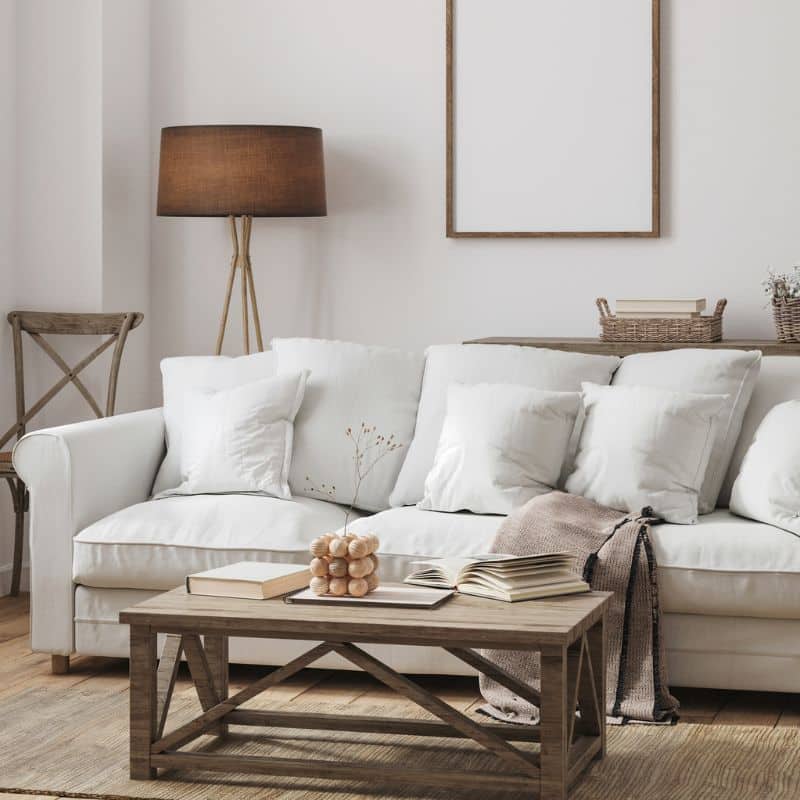If you have a child with an autism spectrum disorder, there are several additional considerations you need to make when deciding on new furniture for your home. Here we have compiled a list of important considerations that you should make so that your child or children are comfortable, calm and safe in their home environment. 1. Sensory issues Sensory considerations should play a crucial role in selecting furniture for households with autistic children, due to sensory processing differences often experienced by people on the autism spectrum. Sensory hyper-sensitivities or hypo-sensitivities can impact how an individual perceives and responds to various stimuli in their environment. This can mean that certain furniture textures, fabrics, and materials could elicit intense or overwhelming responses. For those with hyper-sensitivities, rough textures or abrasive materials might cause discomfort or distress, triggering a sensory overload. Choosing furniture with smooth, non-irritating textures and avoiding materials that might cause distress is important in creating a sensory-friendly environment. Children with hypo-sensitivities might find comfort in sensory-seeking behaviours such as fidgeting, rocking, or certain pleasurable textures or sounds. You can take a look at the Sensory Furniture range from Knightsbridge Furniture to find sensory seeking and avoidant specific furniture. 2. Colour and contrast The colour and contrast of a living space can have an impact on some people with autism, affecting their mood and overall comfort. For furniture selection, colour and contrast are important considerations when creating a sensory-friendly environment. Bright, highly contrasting primary colours or busy patterns might overwhelm some autistic individuals, leading to sensory overload and increased stress levels. Therefore, when choosing furniture, opting for muted or neutral tones can create a more calming and soothing atmosphere. Soft pastel hues or earthy tones have been shown to help reduce visual stimuli. Contrasting colours between furniture and the surrounding space can also affect visual processing. Stark contrasts can create a jarring effect or visual distraction for some autistic children. To mitigate this, choosing furniture that blends harmoniously with the room’s colour scheme can create a more visually calming environment. This might involve selecting furniture that matches or complements the wall colours, flooring, or other elements in the space. Creating a visually cohesive environment through furniture choices can promote a sense of stability and predictability, supporting the well-being of people with autism in their home environment. 3. Familiarity Because of their difficulties with information processing, many individuals on the autism spectrum highly value routine and familiarity. Differences in sensory processing information coupled with a heightened disposition to anxiety can make even the smallest changes seem very stressful. This is why you might have noticed that your child enjoys repetitive behaviours and special interests – these familiar routines provide a sense of order and predictability that helps with anxiety. Keeping the importance of routine and familiarity to your child in the front of your mind is crucial when buying new furniture. Replacing lots of furniture in your house at once might cause distress to your child. If you are aiming to replace much of your furniture, it is a good idea to space this out. Allowing your child to get used to small changes gradually will be much easier for them to deal with than a drastic change all at once. 4. Safety issues As with any child, you should always emphasise safety within the household, ensuring that all furniture is as child-friendly as possible. This means avoiding sharp corners, glass furniture that has the potential to be broken, and loose furniture that could be picked up and thrown or fall on your child. See these furniture child-proofing tips to guide you in creating the safest environment possible. Anchoring items like TVs and other bigger appliances is also a good idea, especially if your child is prone to meltdowns or tantrums. Minimalism is probably the safest and most visually calming environmental style for a child on the autism spectrum, as hazards are minimised and clutter is reduced. If you don’t have a lot of storage space, you can look at these solutions for limited storage. 5. Sound Due to the aforementioned sensory processing differences, seemingly harmless background noise can be extremely irritating and distressing for people with autism, and too much noise can also contribute to sensory overload. It’s worth considering possible soundproofing solutions when investing in new furniture for your home. Things like soundproof curtains or panels can help block out some of the background noise that can be overwhelming, particularly in their bedroom or sensory room. 6. Their personal preferences Ultimately, the most effective way to ensure your child is feeling comfortable and calm in the home is to ask for their opinion on any new additions to furniture or changes you plan to make. Every individual with autism is unique, with their own sensory and behavioural differences and environmental preferences. You need to cater specifically to them , rather than the idea of what an autistic child might need or prefer.
This content was originally published here.
